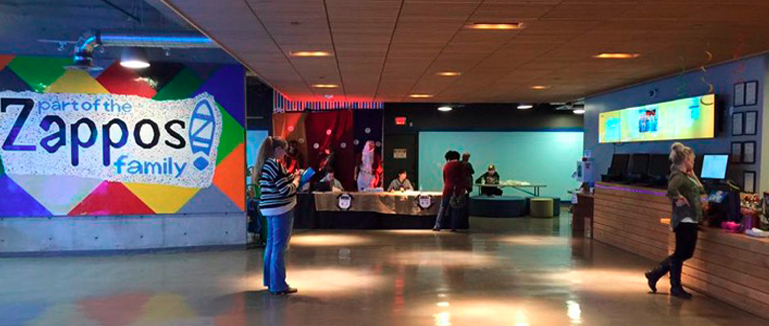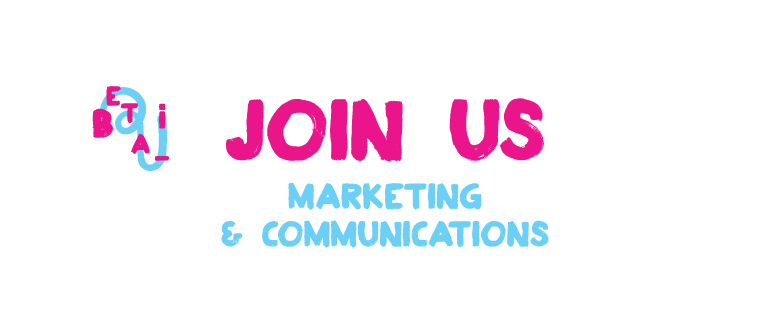
by nlopes | Apr 13, 2016 | Uncategorized
This article is part of the Lisbon Challenge series on culture and how it affects every decision you make. You can find the presentation deck online.
When I first met Tony Hsieh, at a social media conference in Las Vegas in 2008, I was inspired by the simplicity in his message as much as the awkwardness and humility of his public appearance. Tony seemed to be the least probable of people to ever inspire you, let alone run a company with revenues of over $1 billion USD.
Tony’s emphasis was, and has throughout the years, centred on the internal culture of the company. With the passing of time, the only thing that changed was his conviction that in fact culture, and not customers, was the number one priority, a belief that was grounded on the impressive performance of Zappos.
Through time, the core values from which Zappos derives its culture, brand and business strategy have subtly evolved from Core Values to Family Core Values. This is a big change. You can’t enforce a culture at work if those values are not followed through in the private life of the employees.
- Deliver WOW Through Service
- Embrace and Drive Change
- Create Fun and A Little Weirdness
- Be Adventurous, Creative and Open-Minded
- Pursue Growth and Learning
- Build Open and Honest Relationships With Communication
- Build a Positive Team and Family Spirit
- Do More With Less
- Be Passionate and Determined
- Be Humble
Every time I went to a conference in Las Vegas, I always made time to go and spend some time at Zappos. I still remember walking around their Henderson offices, as part of the daily tours they have for anyone to join, and being left confused with the amount of joyful activity yet impressive business results.
As we moved from department to department in a vast open space, each group of Zappos employees put on their best show for the visitors. Some blow horns whilst others put on a wacky dance, most interrupting their work to demonstrate the Zappos culture at work.
I let my group move on and couldn’t resist leaning over to an employee and discreetly asking “what happens when you have shit day?” Her concerned look should have prepared me for the answer. “We don’t have shit days”. And there you go. This is no place for skeptics, naysayers or individuals with chips on their shoulders. This is Zappos – happy land where you are either in, or out.
With time and experience, I began to understand that this isn’t a strategy you copy, but instead one, which you need to fully understand and decide whether you are prepared or not to adapt to your organization.
It’s not about being Zappos or like Zappos, but instead understanding that every decision you make, whether product or recruitment based, must be aligned with your culture yet the hard part is defining it concretely and then executing on it, every minute of the hour, every day of the year.
It’s a process in constant evolution and not something you revisit on a yearly basis. It’s not a strategy, tool or marketing gimmick. It’s central to your existence and of the utmost importance, more so than being centered on your customer.
“To make customers happy, we have to make sure our employees are happy first.”
Zappos
The idea of creating a great company culture emerged in the latter part of the last decade, as companies feared employee turnover simply because working in most companies just plain sucked back then. There were just a few case studies where traditional media focused on the gimmicks – free food, Ping-Pong tables, spas and child care at work. When interviewed, most of these lucky employees seemed overly gracious of their luck in being so happy at work.
In one 60 Minutes interview, an employee walked around a campus describing all the endless perks paid by his employer to ensure they were looked after. The interviewer asked in a skeptical tone “Isn’t this like living in Disney World?” The reply was sharp. “Yes. But who doesn’t love Disney World?”
We need to ensure we don’t confuse the existence of perks with a great company culture. Don’t be fooled by the shiny objects – the visual side of a great company culture: what you don’t see is even better yet. Companies like Zappos don’t motivate their collaborators – they inspire them to learn, share and look after each other. They are building a sustainable and tight community of like-minded individuals with one single goal. Some might see it as a cult. At times, it sure does sound like it but it really is voluntary. Or so I’m told.
In most businesses, product and price play too much importance in the future of the company. Building a strong culture does create a competitive advantage, difficult to emulate, especially compared to the time it takes to copy a product, undercut the competitors’ price or poach their most valuable of employees. Culture isn’t copied. At best, it is understood, adapted and implemented to fit the company, ensuring relevance and context. It’s a monumental commitment that will eventually pay back but it’s no quick fix.
photo: Zappos

by nlopes | Apr 12, 2016 | Uncategorized
This article is part of the Lisbon Challenge series on culture and how it affects every decision you make. You can find the presentation deck online.
It is in the beginning of a company’s existence that identifying and creating an internal culture makes most sense. As you are focused on the core product and/or service, the business model and investment and recruitment needs, a well-defined and relevant internal culture will greatly increase the odds of success.
Relevant because culture starts at the top, defined by the CEO and his/her traits as a human being. If there’s one thing that is extraordinarily difficult to teach adults, it’s principles – our morality, values, ideologies, philosophies, ethics, doctrines, beliefs, attitudes and opinions.
Though all of these appear to be synonyms, there are subtle differences between them, yet they all converge to define us as human beings and impact the way others around us view and react to us. Understanding them is fundamental yet ironically overlooked by the majority of startups.
There seems to be a general consensus that first you build it, then you scale it and, once you have secured funding, you can then resolve these issues. Nothing could be further from the truth.
Making Change Happen
Change is possible but it requires self-assessment, time, focus, energy, humility and the desire (need) to become a different (better) person. However, most individuals in startups don’t understand their position as CEO and/or Founder, the tasks that are incumbent to such a position and the impact their personality will have in the shaping of the company.
Some even foolishly believe that democracy and friendship is the best possible form of managing their future business. They are seriously deluded and are in for a shock the very first time a decision needs to be made in the face of discord. Someone has to decide and everyone needs to be onboard, whether or not they agree.
A winning culture does not necessarily reflect in a wacky and fun place to work where irreverence is favoured over sobriety. Before Tony Hsieh and Zappos, Herb Kelleher was doing the same with Southwest Airlines. Both companies are team oriented, striving to create a family atmosphere, but it deeply reflects on the founders’ principles and the culture they created.
Culture evolves organically, and forcing “fun” and “wacky” only increases your odds of failure. If you believe that your internal culture sucks then remove the Hawaiian shirts, flip flops and annoying Ping-Pong tables and figure it out. Not everyone can create a billion dollar company nor invent the next big thing, but most of us are capable of creating a sustainable business that will ensure we live a life of quality.
You can learn a lot from Zappos and Southwest Airlines, but if you think you are going to pay people to leave your business halfway through recruitment, encourage them to dress in bizarre outfits and pamper them with an enviable package of perks as a form of revolutionizing your culture, think again. What works for one company, doesn’t work for another.
Be honest about who you are as a Founder, who you want to be and reflect that in a way in which it can be understood, embraced and followed by every person that works there. Ensure that everything and anything you do is solidly based on those principles. It’s not about having your marketing and PR department create a sexy or intelligent mission statement, but instead a correctly communicated statement of intent that clearly maps out what your company stands for but, more importantly, what it doesn’t.

by nlopes | Apr 11, 2016 | Uncategorized
As the start-ups from our corporate accelerator with Fidelidade and Fosun, Protechting, get ready to pitch at the final which will be held on Thursday in one of the auditoriums of Fidelidade, we thought it might be useful to highlight some of the best pitch decks out there, of companies that you most probably have heard of.
You can check out the a list of 38 here on StartupFundraising and there is also the site bestpitchdecks.com that has an even larger selection including Facebook’s first deck and Airbnb’s.
As you look through them you’ll see that they usually don’t have more than 20 slides and always cover the following topics:
- Product / problem & solution
- Business model
- Market size
- Team
There is no scientific way of creating THE pitch deck and you will hear many differing opinions – ultimately, like everything else in this process, it’s up to you – just make sure everyone understands you and your idea. Better to be rejected because people don’t see the value in your start-up than because they didn’t understand what you do.
[slideshare id=56558364&doc=youtubepitchdeck-151230174251]
[slideshare id=11141069&doc=brandboardsdemodaypitchdeck-120118131821-phpapp01]
[slideshare id=18142080&doc=chewsedeck-130205130100-phpapp02-130403212909-phpapp01]
[slideshare id=10620782&doc=foursquare-1st-pitch-2009-111216233113-phpapp02]
[slideshare id=37911918&doc=buzzfeedinvestordeck2008-140812084757-phpapp01]

by nlopes | Apr 8, 2016 | Uncategorized
I joined Beta-I in June of 2015 as Head of MARCOM (marketing & communications) excited at the prospect of being exposed to the start-up world in an organization that has grown at an impressive rate. Nine months later, there’s no baby, but I have accepted a new internal challenge – more on that at a later stage.
I am extremely proud of what the MARCOM team has achieved and I am confident that the next person to head MARCOM will not only grow as a professional but will also have the opportunity to work in a fast and furious environment that pretty much touches every aspect of the ecosystem.
Excited? Me too. So if you think that this is something you’d love to do, send your CV and a brief outline of how you envisage yourself in this role. Don’t underestimate the necessary drive and capacity to play on multiple fronts – Beta-I has 3 main fronts:
- Acceleration with the flagship program Lisbon Challenge, Beta-start and the multiple corporate accelerators such as Deloitte Digital Disruptors and Fidelidade & Fosun’s Protechting.
- Innovation working with powerful brands such as Airbus, Nestlé and Amorim as well as the new LX open data project – Smart Open Lisboa.
- Events with the Lisbon Investment Summit, Fast Track Lisbon, Master Classes and of course alongside some of the key events in Portugal and abroad such as the WebSummit.
Transversely, MARCOM plays an important role in supporting the community, our Alumni and our hub in central Lisbon. So, what are we looking for?
Head of Marketing & Communications
The Head of Marketing & Communications position at Beta-i will be responsible for overseeing the planning, development and execution of Beta-i’s marketing and communications initiatives.
Reporting directly to the board, their primary responsibility is to generate revenue by increasing sales through successful marketing for the entire organization, using market research, pricing, product marketing, marketing communications, advertising and public relations.
The head of MARCOM ensures the organization’s message is distributed across channels and to targeted audiences in order to meet sales objectives.
As a senior-level marketing professional, the Head of MARCOM must be both analytical and creative, and possess extensive knowledge in a variety of disciplines including WordPress.
Skill Set:
- Solid analytical skills
- Demonstrated ability to lead and inspire a team
- Great communication and interpersonal skills
- Flexibility
- Passionate customer advocacy
- Thorough knowledge of marketing principles, brand, product and service management
- Deep understanding of changing market dynamics
- Startup spirit
Primary Responsibilities:
- Facilitate growth, sales, and marketing strategies at Beta-i.
- Increase revenue generation.
- Reduce costs.
- Prepare overall marketing strategy.
- Develop programs with quantifiable objectives to measure results.
- Implement and manage marketing budget.
- Leverage data and analytics to drive insights.
- Modify or redirect business intelligence strategy.
- Oversee and direct the efforts of the marketing team.
- Develop segmentation, competitive analysis/market intelligence, prospecting, lead generation, product and market development, pricing, promotions, communications and budgets, sales force effectiveness, strategic planning, services units and revenue retention and growth.
- Oversee the development of new products.
- Create product roadmap.
- Develop and measure key metrics around the business including user acquisition, conversion rates, engagement rates, satisfaction and renewal rates.
To apply, please send your CV and brief summary to joinus[AT]beta-i[DOT]pt with the code FB0804 in the subject line. Look forward to hearing from you and have a great week end.

by nlopes | Apr 1, 2016 | Uncategorized
[fusion_text]
This article is part of the Lisbon Challenge series on culture and how it affects every decision you make.
One of the key components of our acceleration programs is the inclusion of workshops relevant to the different life cycles of the startup. These presentations are posted online as are all the corresponding posts that dive deeper in each topic. Though these sessions are closed to the startups of each acceleration program, you should be able to get all the information from the presentation deck and accompanying posts. For future series on specific topics, please visit our series page on our [Re]Think blog.[/fusion_text][one_full last=”yes” spacing=”yes” center_content=”no” hide_on_mobile=”no” background_color=”” background_image=”” background_repeat=”no-repeat” background_position=”left top” hover_type=”none” link=”” border_position=”all” border_size=”0px” border_color=”” border_style=”” padding=”” margin_top=”” margin_bottom=”” animation_type=”” animation_direction=”” animation_speed=”0.1″ animation_offset=”” class=”” id=””][title size=”1″ content_align=”left” style_type=”none” sep_color=”” margin_top=”” margin_bottom=”” class=”” id=””]
Presentation Deck
[/title][fusion_code]PGNlbnRlcj5bc2xpZGVzaGFyZSBpZD02MDEwOTQ1MSZkb2M9Y29tcGFueWN1bHR1cmUtMTYwMzI4MDk0NTI2XTwvY2VudGVyPg==[/fusion_code][/one_full][fullwidth background_color=”” background_image=”” background_parallax=”none” enable_mobile=”no” parallax_speed=”0.3″ background_repeat=”no-repeat” background_position=”left top” video_url=”” video_aspect_ratio=”16:9″ video_webm=”” video_mp4=”” video_ogv=”” video_preview_image=”” overlay_color=”” overlay_opacity=”0.5″ video_mute=”yes” video_loop=”yes” fade=”no” border_size=”0px” border_color=”” border_style=”” padding_top=”20″ padding_bottom=”20″ padding_left=”” padding_right=”” hundred_percent=”no” equal_height_columns=”no” hide_on_mobile=”no” menu_anchor=”” class=”” id=””][title size=”1″ content_align=”left” style_type=”none” sep_color=”” margin_top=”” margin_bottom=”” class=”” id=””]
Recommended Posts
[/title][recent_posts layout=”thumbnails-on-side” hover_type=”none” columns=”1″ number_posts=”4″ offset=”” cat_slug=”culture-series” exclude_cats=”” thumbnail=”yes” title=”yes” meta=”yes” excerpt=”yes” excerpt_length=”35″ strip_html=”yes” animation_type=”0″ animation_direction=”down” animation_speed=”0.1″ animation_offset=”” class=”” id=””][/recent_posts][/fullwidth]





